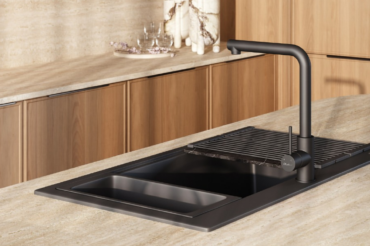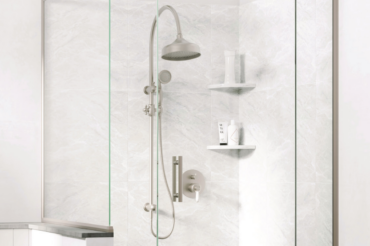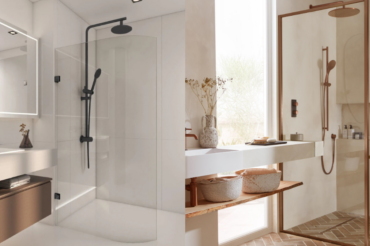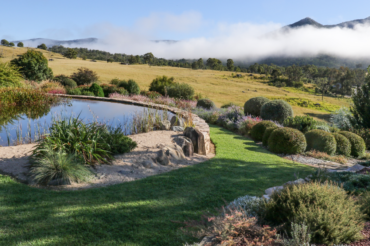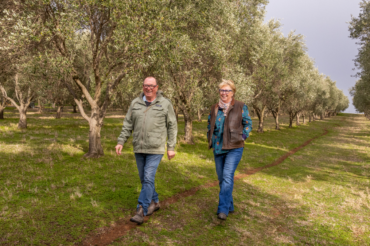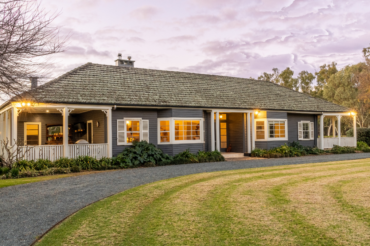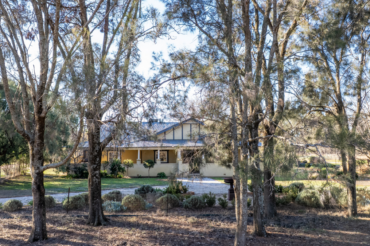
Mel and David Welsh converted a shipping container as temporary accommodation while they built their dream home on a farm near York in Western Australia.
It wasn’t that Mel Welsh didn’t like camping, but after six months spending most weekends in a tent, she was well and truly over the work the preparation and clean up involved. When she and her husband, David and daughters Matilda, 13, and Libby, 10, bought a 100 acre (40-hectare) property in Western Australia’s Avon Valley, in 2018, they intended to build a homestead straight away. But COVID lockdowns and building delays meant that was not to be, so the family decided to spend their weekends camping on the farm, which is just 2.5 kilometers from their home in the historic village of York on the edge of WA’s Wheatbelt.

“Once we were there we absolutely loved it,” Mel explains. “But I pretty quickly discovered one night’s camping involved three days’ work. I didn’t want anything fancy, I just thought it would be much easier if we had a place with beds, a shower and toilet and somewhere to cook; a building we could lock up and leave when the weekend was over.” About the same time, Mel, whose career has morphed from agronomic research and development to interior design, was looking at the benefits of reducing the footprint of housing, in particular new builds. “You don’t have to look far to see some grossly huge homes,” she says. “I was coming to the realisation that big is not necessarily best. It’s a strain on resources and the environment and expensive to build. A tiny home made a lot of sense for our situation, which is temporary while we are building the main house about 800 metres further along the ridge.”

Which is how Mel and David came to buy a 40-foot (12-metre) shipping container and move it to Jam Tree Hill, the name given to the farm for an acacia that’s endemic to the locality. It’s sited on a ridge with views over the entire valley to Mounts Bakewell and Brown in the distance. While Mel says she wanted to keep it simple, it’s not in either her, or David’s, DNA to do anything by halves, so the container has become a great example of what can be achieved on a small scale. “Although it wasn’t intentional, the ceiling height of the container we found at the right price point was 2.7 metres, which means it doesn’t feel cramped,” Mel says. “Adding the deck was a means of expanding the living area, so although the footprint is tiny, we don’t feel we’re falling over each other.”

David, who trained as a boiler maker and fitter and, until recently, worked in the mining industry, was able to source old drilling rods for the framework for the deck. Next challenge was to install a solar system and water tank to supply power and water to the farm, which despite being close to town, is not connected to mains services. Fortunately, both David and Mel grew up on farms – Mel near Geraldton in the Mid West and David on a Kimberley cattle station – so they’re used to adapting and finding practical solutions to problems. They’ve known each other most of their lives, as they met at boarding school in Perth. It wasn’t until 2004 that they became a couple and by that stage, Mel’s work in agribusiness had taken her to York. David was working FIFO in the mine so it made sense for them to base themselves in York.

“We bought our first house in Bakers Hill [about 40km east of York],” Mel explains. “But when Matilda was born, we decided to move to York where I had friends and felt less isolated. It’s a great community with lots of festivals and events and particularly popular with weekend trippers during the cooler months.” She adds that while she loved her career in agribusiness it wasn’t practicable with a young family and David’s long periods away for work. “My career path was field-work based,” Mel explains. “There was a lot of interstate and overseas travel so I kind of opted out of it, admittedly kicking and screaming in a bit.”

Serendipitously, about the same time, her parents had retired and moved to Dongara on the coast and Mel found herself helping her mother restyle their new home. “It was mainly a new kitchen and furniture and painting throughout,” Mel says. “But it was enough to remind me how much I enjoyed being creative. I’d studied art at school, but growing up on farm, working in agriculture seemed almost mandatory, so I’d never really thought about any other career.”

Word of mouth is a powerful tool, and as friends and family saw Mel’s work, gradually jobs started coming to her. She launched Melissa Welsh Style and Design in 2017 and business has been growing ever since. “I’ve done a couple of styling courses, but basically I’m self-taught,” she says. “I keep thinking I’ll do an interior design course, but right now I’m too busy, both with our own build and other people’s projects.”

Mel finds great connection with country clients, who tend to remodel existing homesteads and cottages rather than build new. “I understand how things go on-farm,” she says. “If and when you do sell the banks and buyers are looking at the land not the home, so it’s a matter of finding a balance between function and aesthetics. At the same time, farmers live and work from home, so ideally their houses should be as comfortable as possible.”

Mel adds that she’s always mindful of budgets, but also errs on the side of quality over quantity. “Just as I do in own home, I’d rather have a few good pieces that stand the test of time,” she says. “Besides, lots of people already have great stuff, they just don’t know how to pull it together. I can help arrange artworks that they’ve picked up on their travels to better effect or advise on the one accessory couch or a rug – to make a room come together.” When it comes to their own dream home, it’s still a work in progress. David has resigned from his busy schedule in mining and is running a bottle shop they own in York at the same time as project managing the build. Inevitably there are delays, due to juggling a lot with their careers, a young family and the difficulty lining up trades in the regions. The Welshes consider themselves very lucky to have the help of the builder who did the container conversation to realise the design created by Perth-based designer Adam Butcher of Dark Light Design.

“The house will be similar in aesthetic to the container, with a colour palette inspired by the surrounding landscape,” Mel says. “It’s relaxed and low-maintenance, with concrete floors and sisal carpets. It has three bedrooms and a study, but we don’t need a guest room because we have the weekender. We’ve started renting it out on Airbnb, and we’ll be able to share it more regularly once we no longer need it for our own use. We’re excited to move in, hopefully in the spring. It’s been a hectic couple of years with lots of challenges, but now that the end is in sight, we’re sure it will all be worthwhile.”

